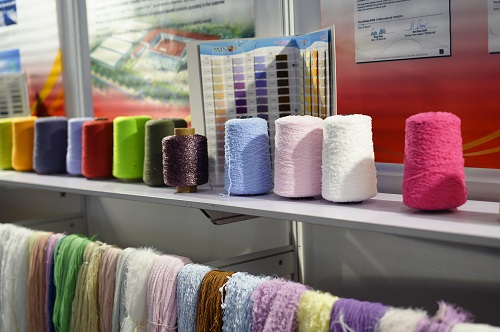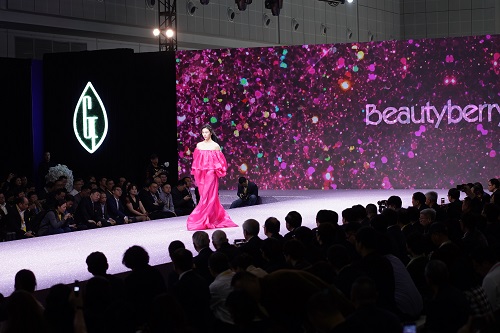FW
Sportswear brand Nike, which is growing at double-digit rates in the Old Continent, expects to exceed $10,000 million annually in sales and end 2020 with record turnover in the country. For the first time, Nike exceeded Adidas in footwear sales in the Germany market. Between June and November, the brand’s sales increased 14 per cent in Europe, Africa, and the Middle East (EMEA) markets, and almost all of its product categories, from sportswear to other brands such as Jordan witnessed “double-digit growth.
The growth rate in this market is also higher than that of Nike on a global scale, since, at the end of the first six months of its fiscal year, which goes from June to May, its revenue rose 9 per cent, to $21 billion. On the other hand, net profit in Europe stood at €1.1 billion, 18 per cent more than in the same period of the previous year.
Nike’s strength in Europe contrasts with the downward trend of Adidas, whose revenue has declined in this market over the past two years. In the absence of knowing the economic results of 2019, Nike managed to stop the draining in sales in Europe and ended the first nine months with revenues of 4,668 million euros.
"Though many countries added climate crisis to the top of their agenda in 2019, many were not serious about the urgency of this issue. On November 4, 2019, US President Donald withdrew from the Paris Agreement by notifying the United Nations of its intention to leave. Cosigned by the US and 194 other countries in December 2015, the Paris Agreement aims to keep global surface temperatures to below 2°C above pre-Industrial Revolution levels and limit their increase to 1.5°C. According to a UN Environment report published in November 2017, the industry is on its way to achieve these targets. Trump’s decision to withdraw from the Paris Agreement at such time comes as a big blow to industry."
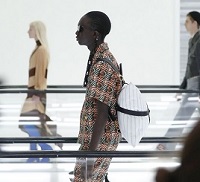 Though many countries added climate crisis to the top of their agenda in 2019, many were not serious about the urgency of this issue. On November 4, 2019, US President Donald withdrew from the Paris Agreement by notifying the United Nations of its intention to leave. Cosigned by the US and 194 other countries in December 2015, the Paris Agreement aims to keep global surface temperatures to below 2°C above pre-Industrial Revolution levels and limit their increase to 1.5°C. According to a UN Environment report published in November 2017, the industry is on its way to achieve these targets. Trump’s decision to withdraw from the Paris Agreement at such time comes as a big blow to industry.
Though many countries added climate crisis to the top of their agenda in 2019, many were not serious about the urgency of this issue. On November 4, 2019, US President Donald withdrew from the Paris Agreement by notifying the United Nations of its intention to leave. Cosigned by the US and 194 other countries in December 2015, the Paris Agreement aims to keep global surface temperatures to below 2°C above pre-Industrial Revolution levels and limit their increase to 1.5°C. According to a UN Environment report published in November 2017, the industry is on its way to achieve these targets. Trump’s decision to withdraw from the Paris Agreement at such time comes as a big blow to industry.
Only two brands meeting emission targets
An October 2019 report by Stand.earth reveals only two major brands -- Levi’s and American Eagle Outfitters -- are taking enough measures to meet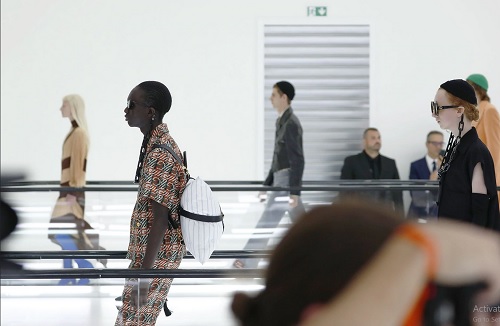 the targets set by the Paris Climate Change Agreement. These two brands are putting the world on the pathway to 1.5°C or less of warming. Meanwhile, 14 other brands, including Burberry, H&M and Kering (owner of Gucci, Alexander McQueen and more) are on target to achieving 2°C.
the targets set by the Paris Climate Change Agreement. These two brands are putting the world on the pathway to 1.5°C or less of warming. Meanwhile, 14 other brands, including Burberry, H&M and Kering (owner of Gucci, Alexander McQueen and more) are on target to achieving 2°C.
Signed by over 40 brands — including Burberry, Stella McCartney and Adidas — the UN Fashion Industry Charter for Climate Action in December 2018 targets GHG emissions reduction by 30 per cent. However, this target falls short of the recommendations put forward by the Intergovernmental Panel on Climate Change (IPCC) in a 2018 report.
Reorganising supply chains to go carbon neutral
Now, over 150 brands have signed up to Autumn 2019’s G7 Fashion Pact which aims to achieve zero GHG by 2050 in order to keep global warming below 1.5°C until 2100. However, the agreement does not set a roadmap to achieve these targets.
In September 2019, Gucci and its parent company Kering announced its intention to go carbon neutral by reducing its emissions before offsetting the rest. However, since 90 per cent of these emissions are generated from the brand’s supply chain, these targets need to address the production part first. It is therefore, the responsibility of the world’s leading fashion companies to help catalyse major shifts across the globe.
Sri Lanka’s total textile and clothing exports were up by 5.7 per cent in 2018. Out of this, exports of clothing increased by 4.7 per cent in 2018 over 2017.
Sri Lanka’s textile manufacturing has been an organized industry since the 1940s and a clothing industry since the 1970s. It’s therefore, necessary for Sri Lanka to chalk out a new policy for textile and clothing aiming at attracting more investments, creating new jobs and adding value to the apparel industry value chain. The country’s real challenge is to be competitive and yet increase significantly the share of its value and volume in the market. For that it needs to bring in a new broad perspective and a paradigm shift. Its supply chain practices need a new look. The craftsmanship needs to be perfect and coupled with branded labels. Professional ethics and relationships need to be improved. Among the steps considered are a knowledge hub with emerging technologies and innovations such as AI and advancements in material science coupled with digitalization, big data and analytics to create the perfect platform for modern-day business. This needs a change in the ways of designing, sourcing, manufacturing and delivering.
Volatility, geopolitical risks, natural disasters, terrorist attacks and social media disruptions are all taking their toll on global supply chains.
By 2025, Inditex wants to ensure the cotton, linen and polyester used by all eight of its brands will be organic, sustainable or recycled. Inditex’s brands Zara, Zara Home, Massimo Dutti and Uterqüe have already eliminated the use of plastic bags. By 2023, all single-use plastics will have been totally eliminated. In 2018, only 18 per cent of the bags were made from plastic.
Inditex applies technology to its advantage. Using Radio Frequency Identification Technology, it knows which items get sold and where. The brand invests in client feedback with regular surveys to know which fashion items people are wanting to buy. Next year, all of the group’s stores will have been fitted with containers for collecting used clothing for subsequent charitable purposes, reuse or recycling. The clothing collection program is one of the cornerstones of Inditex’s circular economy effort. Inditex, based in Spain, is the biggest fashion group in the world, with more than 7000 stores around the world. Zara is its flagship brand and leads the pack with 2,266 stores. Zara has shorter lead times, which means it is always up to date with, if not ahead, of trends. Zara makes sure these clothing items reach stores as soon as possible.
India’s textile and apparel exports fell by eight per cent from April to November 2019. Exports were severely affected by the trade conflict of the US with China, the EU’s struggle with Brexit, growing geopolitical tensions in the Middle East and the removal of GSP benefits to India by the US. Under GSP, developed countries grant import duty concessions, in addition to prioritising purchase of textile and apparel products from some countries.
The delay in announcement of Remission of Duties or Taxes on Export Products is set to result in a further three per cent or four per cent contraction in apparel exports. Many textile players signed export contracts on expectations of continuation of the Merchandise Exports from India Scheme (MEIS), and the Remission of State Levies scheme. The delay in announcement has blocked the working capital of exporters. Since cotton yarn bears the same incidence of state and central levies, similar to made-ups and garments, the industry wants cotton yarn to be covered under the Rebate of State and Central Taxes and Levies Scheme and MEIS and also under the three per cent interest equalisation scheme.
India’s apparel exports to the US rose six per cent in April to November.
Declining by 27 per cent YoY in December 2019, both in terms of US dollars and Indian rupees to $641 million or Rs 4,521 crore, the export of basic textiles declined to about 2.3 per cent of total merchandise exported from India during the month. A year ago, the same group of basic textiles had accounted over 3 per cent of total merchandised export.
Shipment of spun yarns shipment declined 9 per cent in dollar terms to $312.50 million or by 8 per cent to Rs 2,204 crore. The unit value realisation of all types of spun yarn declined by 28 US cents to average $2.71 per kg. Bangladesh remerged as the largest market for spun yarns, topping both in terms of volume and value, having risen year on year. Exports of cotton yarns declined 14 per cent to $250 million or Rs 1,766 crore in 2019. Around 78 countries imported cotton yarn from India in December at an average price of $2.752 a kg. Exports of blended spun yarns increased 3 per cent YoY to reach $40 million in December. Around 9.9 million kg of PC yarns were exported during the month while 3.7 million kg of PV yarns were exported.
Shipment of all kinds of filament yarns increased by 15 per cent to 69 million kg and was valued at $104 million. In terms of value, exports of nylon and polypropylene filament yarn recorded significant increases.
"The second largest clothing manufacturer and exporter in the world, Bangladesh has become a major hub for manufacturing of extraordinarily cheap garments. Though industry leaders expected Bangladesh’s status as the world’s top manufacturer of cheap garments to change post the April 2013 Rana Plaza collapse, increased scrutiny did not get reflected in apparel costs."
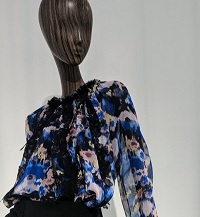 The second largest clothing manufacturer and exporter in the world, Bangladesh has become a major hub for manufacturing of extraordinarily cheap garments. Though industry leaders expected Bangladesh’s status as the world’s top manufacturer of cheap garments to change post the April 2013 Rana Plaza collapse, increased scrutiny did not get reflected in apparel costs.
The second largest clothing manufacturer and exporter in the world, Bangladesh has become a major hub for manufacturing of extraordinarily cheap garments. Though industry leaders expected Bangladesh’s status as the world’s top manufacturer of cheap garments to change post the April 2013 Rana Plaza collapse, increased scrutiny did not get reflected in apparel costs.
Price fall despite rise in initiatives
As Bangladesh-based newspaper Daily Star reveals, prices of apparels made in Bangladesh continue to fall despite increased oversight and the rise in initiatives, such as the Alliance for Bangladesh Worker Safety and the Accord on Fire and Building Safety.
Even an increase in cotton prices, used to make almost 90 per cent garments in the country, have not been able to uplift the price of these apparels. For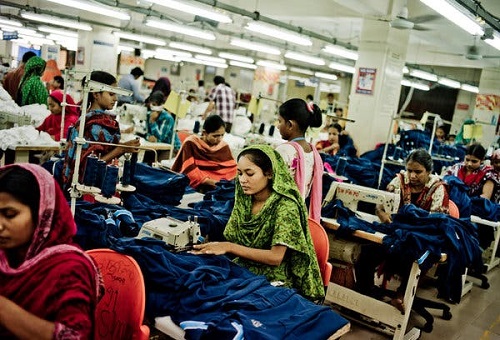 instance, in 2013, the country sold a dozen pair of cotton trousers for $62.26. However, in 2017 prices of the same quantity of pants dropped 12.8 per cent to $54.29 per dozen. At the same time, prices of T-shirts exported to the European Union declined by about 5 per cent.
instance, in 2013, the country sold a dozen pair of cotton trousers for $62.26. However, in 2017 prices of the same quantity of pants dropped 12.8 per cent to $54.29 per dozen. At the same time, prices of T-shirts exported to the European Union declined by about 5 per cent.
Concentration hampers price growth
Reflecting on the falling prices of garments over the past five years Tripti Lahiri, Quartz says, apparel sales are increasingly concentrated in the hands of a few large multinational retailers whose massive orders give them significant legroom to not only set production timelines but also fix prices.
Rubina Huq, President of BGMEA, believes the industry has been over aggressive about price quotes in order to secure business from Western brands and retailers. This has led to buyers taking advantage of the situation by opting for international brands who offer clothes at cheaper rates. As a result, the domestic industry has few options other than reducing the price of their RMG products.
"Jacket Required, the UK’s fashion contemporary menswear and streetwear trade show, taking place at the Old Truman Brewery on the January 22nd to 23rd January 2020, has announced its partnership with Klarna UK to support its commitment to menswear retail and the fashion industry. The show has also revealed a line-up of new brands to the show offering visitors the opportunity to view their collections for the first time in the UK."
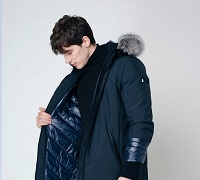 Jacket Required, the UK’s fashion contemporary menswear and streetwear trade show, taking place at the Old Truman Brewery on the January 22nd to 23rd January 2020, has announced its partnership with Klarna UK to support its commitment to menswear retail and the fashion industry. The show has also revealed a line-up of new brands to the show offering visitors the opportunity to view their collections for the first time in the UK.
Jacket Required, the UK’s fashion contemporary menswear and streetwear trade show, taking place at the Old Truman Brewery on the January 22nd to 23rd January 2020, has announced its partnership with Klarna UK to support its commitment to menswear retail and the fashion industry. The show has also revealed a line-up of new brands to the show offering visitors the opportunity to view their collections for the first time in the UK.
On-site, the show sponsor will create a branded installation at the entrance of the show, as well as providing the Klarna Lounge, a break-out space for visitors to meet and network.
Luke Griffiths, Vice President and General Manager at Klarna UK states in a statement; “Since our launch in the UK in 2014, we have been working with some of the biggest names on the UK High Street. Our support of Jacket Required this year is a demonstration of our commitment to menswear retail and the Fashion Industry. We are very excited to be supporting the event and sharing our experience of removing friction from the buying experience for millions of shoppers.”
New brands to participate in the show includes Aigle, Bjanko Milano, Ucon Acrobatics, Dashel, Daisy King Club, Komodo, Revolution, Conscious Step, United Change Makers,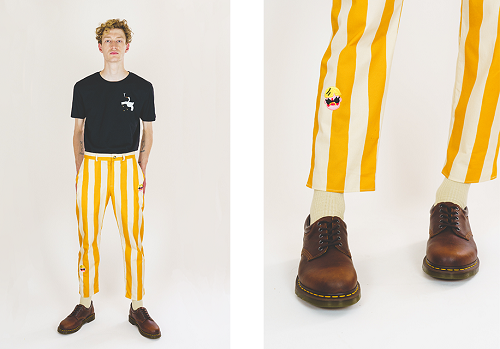 Surf Perimeters , Oscarlino, Alexridolfi, Snowman New York, Saint James, Valentino De Santis, Serts London, Munich Footwear, Invicta, Parkland Bags, Mossimo Clothing, Randolph, Twenty Montreal, Sorren, Bjorn Borg, HEDON, and ON.
Surf Perimeters , Oscarlino, Alexridolfi, Snowman New York, Saint James, Valentino De Santis, Serts London, Munich Footwear, Invicta, Parkland Bags, Mossimo Clothing, Randolph, Twenty Montreal, Sorren, Bjorn Borg, HEDON, and ON.
Selected brands include Didriksons, Fjallraven, MAKIAPOP 84, Kangol, Bailey of Hollywood, Cheaney Shoes, Loake Shoemakers, Blundstone, Yogi , OSPREY, Superga and Sebago. Adam Gough, Event Director at Jacket Required says; “Visitors are going to see some dr have re-evalu ated what visitors want and created a show we hope will be well received by the industry. With an emphasis on sustainability, new and premium brands ry focused. We are delighted to introduce Klarna as our headline sponsor to raise awareness of their services in retail. They have made a big impact since their launch and both retailers and shopper’s benefit from their simple payment solutions.”
Taking place in East London’s Old Truman Brewery on the January 22nd to 23rd, Jacket Required is a premium show offering buyers an inspiring, carefully edited international line-up of contemporary menswear, streetwear, breakthrough talent, footwear, accessories and lifestyle products.
Jacket Required is the UK’s only trade event presenting a curated showcase of the most progressive and contemporary men’s collections. Innovative, creative and with more than a nod to London’s inimitable sartorial swagger, Jacket Required strives to inspire buyers to explore the business potential of their stores and provides a platform for both established and new talent making waves in the fashion industry Jacket Required is a Hyve Group plc event.
Exhibitors and newcomers, including the suppliers from Belarus, are set to show off their latest innovations to meet the specific sourcing needs of buyers with a diverse range of unique functional yarns at Yarn Expo Spring. The fair will be held from 11th to 13th March 2020 at the National Exhibition and Convention Center in Shanghai.
As one of the most essential events in the yarn and fibre industry, Yarn Expo Spring attracted 468 exhibitors from 12 countries and regions last year, a 7.5% increase compared to 2018. Among the comprehensive range of products on offer at Yarn Expo Spring, functional yarns represent a direct and constant market demand in spite of changing fashion trends.
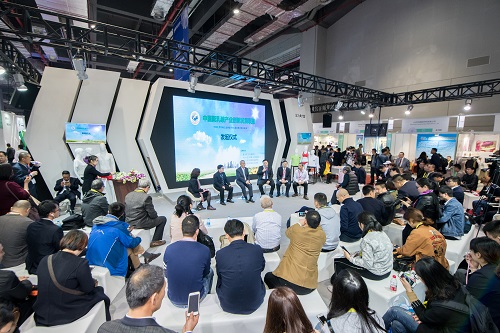
Following the advancement of technology, functional yarns have been developed and used in textile production to enhance the functionality and performance of sportswear, outdoor wear and even everyday clothing. From thermo regulating, moisture absorbing and flame resistant properties to antibacterial, antistatic and more, these innovative features offered by functional yarns add value to textile products as more and more manufacturers focus on customisation according to consumers’ needs. By integrating functionality directly into the yarns, textile products become highly durable, which increases their sustainability as well.
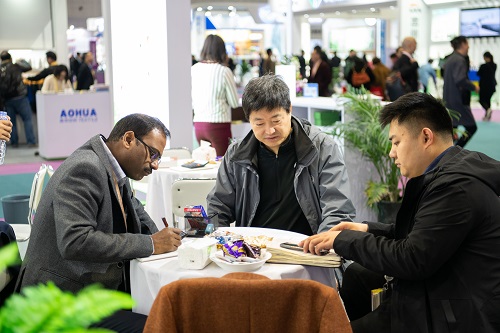
Functional products help exhibitors stand out in the market and reach new clients from around the world at Yarn Expo, which saw over 28,000 buyers from 87 countries and regions last spring. This year, the focus will be on new exhibitors from Belarus who are attracted to join Yarn Expo Spring for the first time to showcase their quality acrylic fibers, nylon yarns, polyester fibres, industrial yarns and more.
“We have observed buyers with a higher demand for quality products, especially products with certifications. This makes our product more competitive and more ready to sell to buyers,” noted Mr Guo Biao, General Manager of Hai Thien Synthetic Fiber Ltd Co from Vietnam.
Everest Textile’s unique yarn processing technology creates moisture absorbing and quick drying stretch fibre that is supplied to renowned brands such as Adidas, Nike, Puma, Patagonia, Spyder, The North Face and more.
“We would like to take this opportunity to better explore the China market and we have continuously seen clients from China, Southeast Asia and the US coming to our booth to enquire. The fair has impressed me a lot with its scale and organisation. The results have exceeded our expectations and we will be back next year. Yarn Expo creates a collaborative global networking place to share ideas, experience, expertise and resources,” commented Mr Shen.
With increasing demand for protective clothing, Korean supplier HJLite believes reflective yarns to be the solution to enhancing the safety and functionality of garments.
China’s textile industry will deploy more resources in green technology and sustainable development to tackle climate change. The future fourth industrial revolution will be based on green technologies plus artificial intelligence. The green industrial revolution means manufacturers can solve issues such as new energy and recycled materials via technological innovations and sustainable productivity development. After a year of hard work, the participation of China’s fashion industry has been meaningful and constructive. China’s textile industry provides jobs to over 27.15 million people in both production and sales.
Tackling climate change is not only a new opportunity for the global textile industry but also a direction for shared responsibility across industries. Many countries’ demand for products made by clean energy and green materials also can help in coping with climate change, achieving emission targets and saving energy costs for their residents.
China’s textile industry is a key player on a global scale. In 2018, China’s chemical fiber production exceeded 50 million tons, making up over two thirds of global production. Textile exports from China reached 37.6 per cent of the world’s total in 2018, a 3.5 per cent increase from the previous year, while apparel exports accounted for 31.3 per cent of the world’s total. China is the world’s biggest textile exporter.

